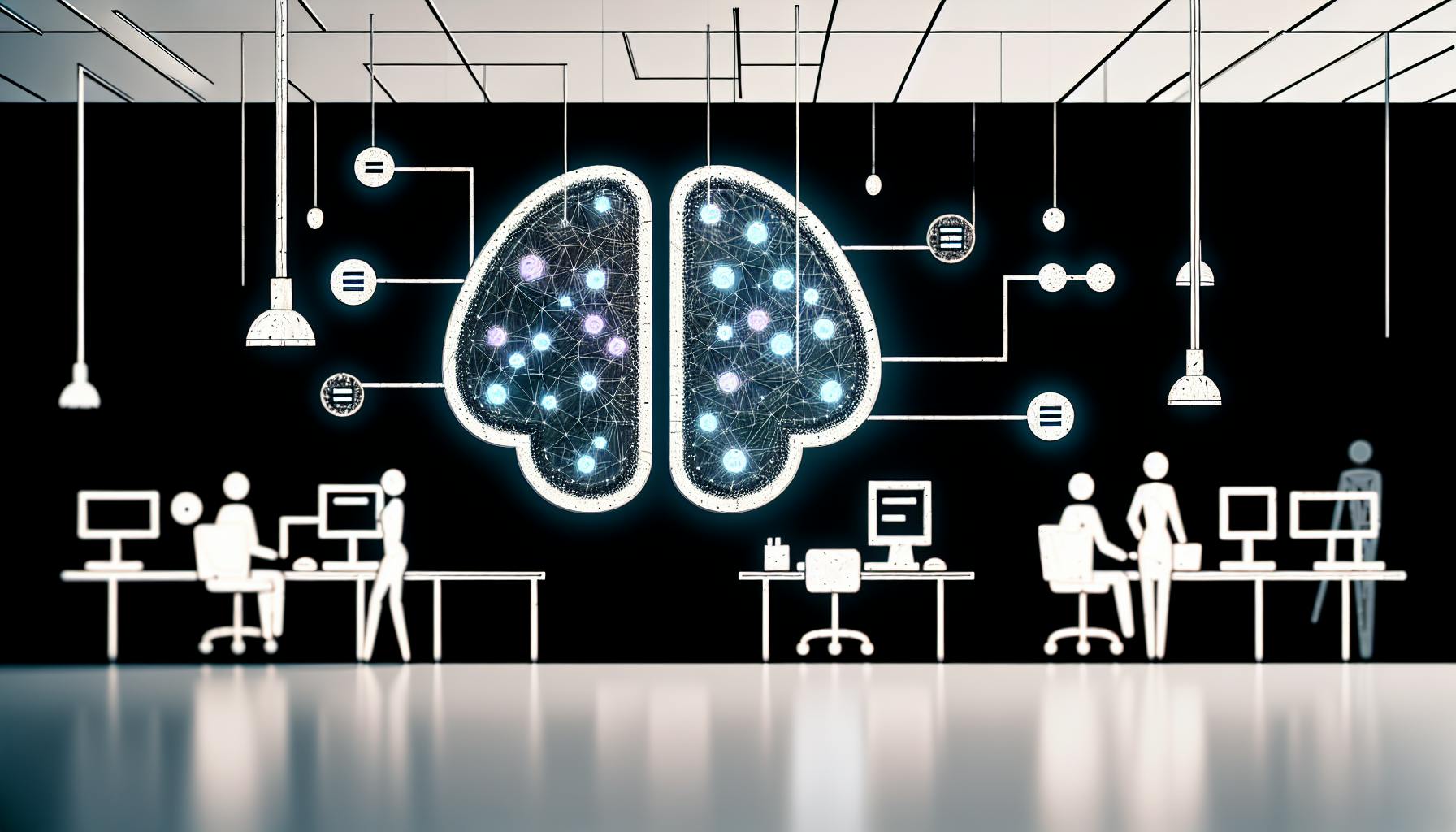Most professionals would agree that charting a fulfilling career path aligned with organizational goals can be an overwhelming endeavor.
Luckily, there is a proven methodology that provides personalized guidance on mapping your skills to career progression opportunities within your company.
In this post, we will explore the essentials of personalized career mapping - from defining its role in talent development to laying the groundwork for skills assessments to strategizing growth plans. You will discover how to implement personalized guidance initiatives that synthesize individual aspirations with organizational needs for mutual benefit.
The Essentials of Personalized Guidance on Career Skills Mapping
Personalized guidance on career development involves creating customized skills maps for each employee that align their professional growth with organizational needs. This approach to career planning provides employees with tailored guidance to help them advance in ways that also support business objectives.
Defining Personalized Guidance Meaning in Career Planning
Personalized guidance refers to career development plans and advice that are specifically tailored to an individual employee's strengths, interests, and aspirations. This is in contrast to a one-size-fits-all approach to career planning which fails to account for personal factors. Personalized guidance empowers employees to chart their own career progression in a way that brings meaning and purpose on the job.
Key elements of personalized guidance include:
- Skills assessments to evaluate current competencies
- Identification of skills gaps and areas for growth
- Mapping future job roles or opportunities that match individual passions
- Outlining development opportunities to build required skills
- Providing coaching and mentoring for steady career advancement
Such an individualized approach allows employees to have agency over their career journeys.
The Symbiosis of Career Progression and Organizational Needs
Personalized career guidance has a symbiotic relationship between employee growth and organizational development. When employees follow career paths aligned with personal fulfillment, their engagement and productivity rises. This directly benefits the organization through enhanced output.
Likewise, mapping employee growth strategies to organizational needs around talent management and workforce planning ensures critical roles stay filled. Employees gain purpose knowing their career advancement actually supports business objectives.
This win-win situation is only possible through personalized guidance on careers versus a one-size-fits-all framework.
The Role of a Career Counselor in Personalized Guidance
While managers can provide some career coaching, trained career counselors play a vital role in personalized guidance. They have the expertise to properly assess individual strengths, connect personal goals to organizational objectives, identify growth opportunities, and provide concrete plans to upskill employees.
Rather than leave employees to their own devices for career progression, having the support of career counselors facilitates personalized guidance on careers from start to finish. Most career counselors today provide virtual or online services, making it easy to find a counselor in your area by searching "career counselor near me".
Laying the Groundwork for Personalized Skills Maps
Creating personalized skills maps begins with understanding both employee aspirations and organizational goals. This alignment ensures career progression paths meet individual and company needs.
Initiating the Skills Mapping Process
The first step is conducting one-on-one meetings with employees to learn about their professional interests, strengths, development areas, and career goals. This provides insight into motivations and talents.
Concurrently, analyze workforce planning priorities like critical roles, skills gaps, and talent needs. This establishes a baseline for the capabilities an organization must develop.
By collecting both sets of inputs, common themes emerge around growth opportunities for people and the business.
Executing a Comprehensive Skills Assessment
With goals defined, complete a skills assessment to quantify current employee proficiencies.
- Self-evaluations gauge individuals' perceptions of their abilities.
- 360-reviews add manager and peer perspectives.
- Skills testing objectively measures competencies.
Cross-referencing these methods provides a holistic view of strengths and development areas. The findings become the foundation for career plans.
Bridging the Divide: Addressing Skills Gaps
Compare assessment findings to workforce priorities to reveal skills gaps. Use gap analysis to create data-driven development plans that serve mutual interests.
For example, an engineer might need to improve cloud architecture skills to meet organizational goals. Or, a marketing manager could develop analytics capabilities to align with their interest in data-driven campaigns.
Addressing gaps transforms employee growth into organizational capability building.
Incorporating Talent Management into Skills Mapping
With development areas defined, map out career progression paths that intertwine individual and organizational success.
- Outline growth opportunities over 1, 3, and 5 year horizons based on interests, strengths, and business priorities.
- Suggest job rotations, mentorships, training programs and other growth opportunities to close skills gaps.
- Connect employees to advancement opportunities to boost engagement and retention.
This talent management integration ensures the workforce has the right skills to achieve strategic goals while enabling people to pursue their passions. The outcome is personalized guidance balancing individual and organizational needs.
sbb-itb-34a8e9f
Strategizing Career Development with Personalized Skills Mapping
Personalized skills mapping can be a powerful tool for fostering career development and meeting organizational needs. By creating individualized plans tailored to each employee's strengths, goals, and growth areas, companies can encourage professional growth while aligning development with business objectives.
Crafting Individualized Employee Growth Plans
When creating personalized career development plans, it's important to:
- Conduct skills assessments to identify current competencies as well as gaps
- Understand individual motivations and career goals
- Map development opportunities to strategic organizational priorities
- Craft concrete plans with targeted skills to develop and resources to utilize
- Set milestones and checkpoints to track progress
Plans should outline development opportunities such as training programs, stretch assignments, mentoring, and more. Goals and timelines should be collaboratively set while ensuring alignment with overarching workforce planning.
Navigating Career Pathing with Personalized Maps
Personalized skills maps can illustrate potential career trajectories based on an employee's competencies, interests, and aspirations. Key elements for effective maps include:
- Multiple potential job role options
- Required skill-building to qualify for each role
- Timeframes and milestones for acquiring skills
- Training programs and other development resources
By visually laying out career pathways with actionable steps, employees are empowered to take ownership of their growth. Managers can provide guidance to help them navigate options.
Utilizing Workforce Planning in Skills Mapping
Workforce planning forecasts organizational talent needs to inform development planning. Key inputs include:
- Projected personnel budgets
- Anticipated resource gaps based on growth plans
- Retirement timelines and turnover probabilities
- Talent acquisition plans
Understanding these inputs allows skills mapping to align with organizational objectives. Employees gain skills needed for future roles, ensuring continuity for achieving strategic goals.
Enhancing Employee Development through Tailored Guidance
Personalized guidance based on skills mapping provides tailored direction to motivate continuous employee development. By establishing individualized plans and setting milestones for closing skills gaps, managers can provide focused coaching. Employees receive the precise guidance they need to excel in current roles and build capabilities for future responsibilities. This fosters an engaged, homegrown talent pipeline ready to meet evolving organizational requirements.
Implementing Personalized Guidance Initiatives for Career Advancement
Organizations can promote continuous professional growth and career advancement through personalized guidance initiatives. By understanding each employee's skills, interests, and aspirations, HR leaders can foster an environment that encourages development.
Building a Culture of Continuous Professional Growth
- Conduct organization-wide skills assessments to identify current capabilities and talent gaps
- Use AI tools to create personalized skills maps and career path recommendations for each employee
- Set up mentorship programs to provide coaching and advice tailored to each person
- Host lunch & learns, speaker series, and workshops aligned to employee development goals
- Recognize those pursuing growth through company awards and incentives
Integrating Personalized Guidance with Employee Development Programs
- Incorporate assessment data into existing training programs to tailor content
- Leverage AI-generated skills maps to assign appropriate development resources
- Provide managers guidance on nurturing employee strengths and addressing gaps
- Allow employees to give feedback on program relevance to their career goals
- Track participation rates and satisfaction scores to iterate on program design
Tracking Progress and Outcomes of Personalized Career Mapping
- Conduct skills assessments at regular intervals to quantify advancement
- Set individual benchmarks for competency development tied to career aspirations
- Calculate increases in critical skill proficiencies across the organization
- Correlate career mapping participation with employee retention and promotion rates
- Gather feedback from employees on the impact of initiatives on their growth
Overcoming Challenges in Personalized Guidance Implementation
- Secure leadership buy-in by demonstrating ROI in talent management
- Gradually roll out initiatives, refining approaches based on insights
- Maintain transparency on how data is used to build trust
- Offer guidance counseling to help employees interpret skills maps
- Develop manager training on providing career advancement support
Conclusion: Synthesizing Personalized Career Guidance and Skills Mapping
Personalized guidance on career skills mapping provides a strategic approach to align individual employee growth with organizational needs. By taking employees through a journey of skills assessment, gap analysis, career pathing, and development planning, organizations can build comprehensive skills maps that facilitate data-driven workforce planning and talent management.
Recapitulating the Personalized Skills Mapping Journey
The personalized skills mapping process entails:
- Conducting multi-dimensional skills assessments to evaluate both hard and soft skills
- Identifying skills gaps through comparison with current and future role requirements
- Mapping well-defined career paths that provide progression opportunities
- Crafting personalized development plans that close skills gaps
This methodology generates rich insights into the existing talent landscape and future human capital needs, enabling proactive management.
Reflecting on the Mutual Benefits of Personalized Career Guidance
For employees, personalized guidance empowers professional growth by:
- Providing clarity on strengths and development areas
- Presenting a clear picture of career progression opportunities aligned to personal goals
- Offering access to relevant learning to upgrade skillsets
For organizations, it facilitates:
- Enhanced workforce planning through skills gap analysis
- Data-driven decisions on training programs based on collective development needs
- Increased employee engagement and retention via well-defined career paths
In summary, personalized career guidance through skills mapping is a win-win - enabling employees to take ownership of their growth trajectory while helping organizations nurture talent dynamically.

